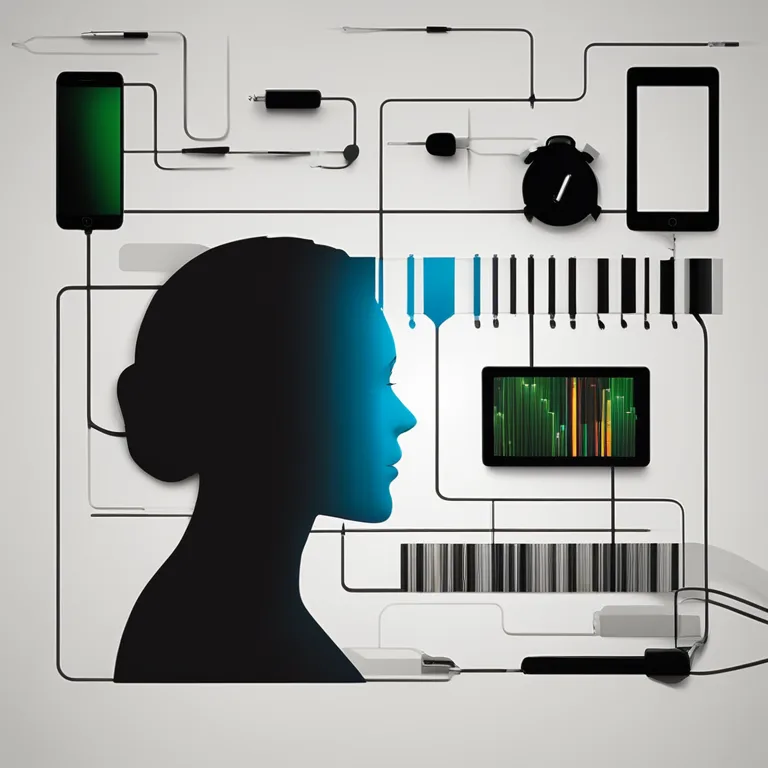
The Accuracy of Biorhythms: Fact or Fallacy?
Evaluating the precision of biorhythms and how they merit in personal assessment for the contemporary mindful individual.
article by Adrian Wallace
Introduction to Biorhythms
In the vast cosmos of personal well-being and prediction, biorhythms have carved out a unique niche. Said to represent biological cycles or patterns, proponents believe these rhythms can predict various aspects of one’s life, from physical to emotional states. Essentially, biorhythms are mathematical models that chart different cycles starting from birth. Long regarded by some as a tool for self-awareness, others question their foundations and accuracy. As we delve deeper into the tenets of biorhythms, let’s unravel if they hold water in the realm of personal analysis or if they are merely pseudoscience wrapped in numerical allure.

Historical Background and Theory
The concept of biorhythms dates back to the 19th century, with the notion that humans are influenced by natural rhythmic cycles. It gained popularity in the 20th century thanks to the works of Dr. Wilhelm Fliess and his 23 and 28-day cycles theories. Modern iterations attribute three primary cycles to biorhythms: the physical (23 days), emotional (28 days), and intellectual (33 days) cycles. Adherents of biorhythms propose that tracking these cycles can offer predictions on one's optimal days for success or caution against potential downfalls. Despite its intriguing premise, the scientific community demands empirical evidence that has proven elusive over the years.

Scrutiny and Scientific Evidence
Biorhythms face skepticism largely because human biology is complex and rarely follows perfectly cyclical patterns. Critics point out that while the idea is appealing, scientific studies have not found substantial support for biorhythmic cycles corresponding to health, behavior, or life events. Many researchers argue that any correlations seen are likely due to confirmation bias or the placebo effect. Moreover, individual variations and environmental factors can greatly influence a person's state, making it difficult to generalize biorhythmic patterns across different individuals. As of 2024, there is still a dearth of peer-reviewed research substantiating the accuracy of biorhythms.

Biorhythms in the Digital Age
Technology has certainly fanned the flames of interest in biorhythms. With apps and online calculators easily accessible, enthusiasts can quickly compute their cycles based on date of birth and explore their personalized biorhythm charts. This ease of accessibility has rekindled interest in biorhythms, but it also begs the question of the validity of these digital interpretations. Critics maintain that without a solid scientific basis, these tools offer little more than entertainment, akin to horoscopes or personality tests that thrive on vagueness and user interpretation.

Interpreting Biorhythms Mindfully
While the accuracy of biorhythms remains contentious, it doesn't diminish their potential usefulness for some individuals as a form of introspection. Like many systems of belief that lack empirical backing, biorhythms can serve as a tool for individuals to reflect on their personal patterns and lifestyles. Regardless of scientific validity, if the process of examining one's biorhythms fosters mindfulness or encourages positive changes, it may hold subjective value. The key is to approach biorhythms with a critical eye and an understanding that they are not scientifically proven predictive tools.
A Balanced Viewpoint
It's crucial to maintain a balanced perspective when considering the accuracy of biorhythms. While enthusiasts may find personal resonance with their charts, it's vital to acknowledge the lack of scientific corroboration. For those who choose to engage with them, biorhythms should ideally complement, not supplant, evidenced-based approaches to health and decision-making. In doing so, individuals can explore the world of biorhythms with curiosity while staying grounded in reality.
Published: 12/28/2023
Modified: 12/28/2023
More predictions
Come back here soon to learn more about yourself and your future


Navigating Biorhythm Cycles
Explore the concept of biorhythms, their cycles, and examples of how they influence our daily lives.


Exploring Human Biorhythmic Cycles
Explore the fascinating concept of biorhythms and their influence on physical, emotional, and intellectual faculties in humans.


Biorhythm Compatibility: Fact Or Myth?
Explore the concept of biorhythm compatibility to discover if there's a real connection between our biocycles and relationship harmony.